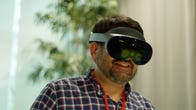Meta has a lot of questions to answer about the future of the metaverse. How can avatars become more convincing and helpful than cartoon-like costumes? Will anyone ever want to get all their work done in a VR headset? And how can all our everyday work apps interface with whatever Meta’s metaverse dreams are promising?
Despite seeming like it could, the new $1,500 Quest Pro VR headset (AU$2,550, £1,500), which I’ve been using at home for the last couple of days, doesn’t answer those questions. It should be a tool to figure out how to get to some of those answers. But for almost anyone looking for a new VR headset to buy, I’d get a Quest 2 instead, or wait. The Quest Pro’s biggest features — eye and face tracking, improved mixed reality that can layer VR with color video from its passthrough cameras, controllers with better haptics and a nicer display and face fit — aren’t worth the $1,100 price bump for most people. And with its limited battery life, the Quest Pro hasn’t solved a way to stay on your head longer between charges.
But, I’m writing my review with the headset right now, using Immersed to cast my MacBook’s virtual monitors onto the Quest Pro. My desk, for the moment, is virtual. (Quick verdict: It’s a bit better now, but still not ideal.)
The Quest Pro is, clearly, a pro device. Anyone who was considering a Quest 2 for business or research purposes might find the Pro an immensely helpful bridge device. It’s also set up to be a device that could adopt most of what the HoloLens 2 or Magic Leap 2 AR headsets promise while still functioning as a full VR headset. It could become a tool for VR performers using face tracking or for people looking for a headset that can do simulation and design with some AR mixed in.
But most people use VR for games. The Quest 2 is a casual entertainment thing and at $400, it can play that role. But the Quest Pro’s $1,500 price means it’s not an everyday purchase. It’s a device clearly aimed at developers and businesses, and early adopters with money to burn.
I used the Quest Pro in a bunch of demos at Meta’s Reality Labs Research facilities, which were almost all mixed-reality focused. At home, I’m using the Quest Pro much more as a VR device and seeing how it feels compared with the Quest 2 (and, Pico’s new not-available-in-the-US Pico 4).
This is a review in progress, and I’ll be updating my thoughts. But so far, the Quest Pro’s potential isn’t lived out in its current apps and software.
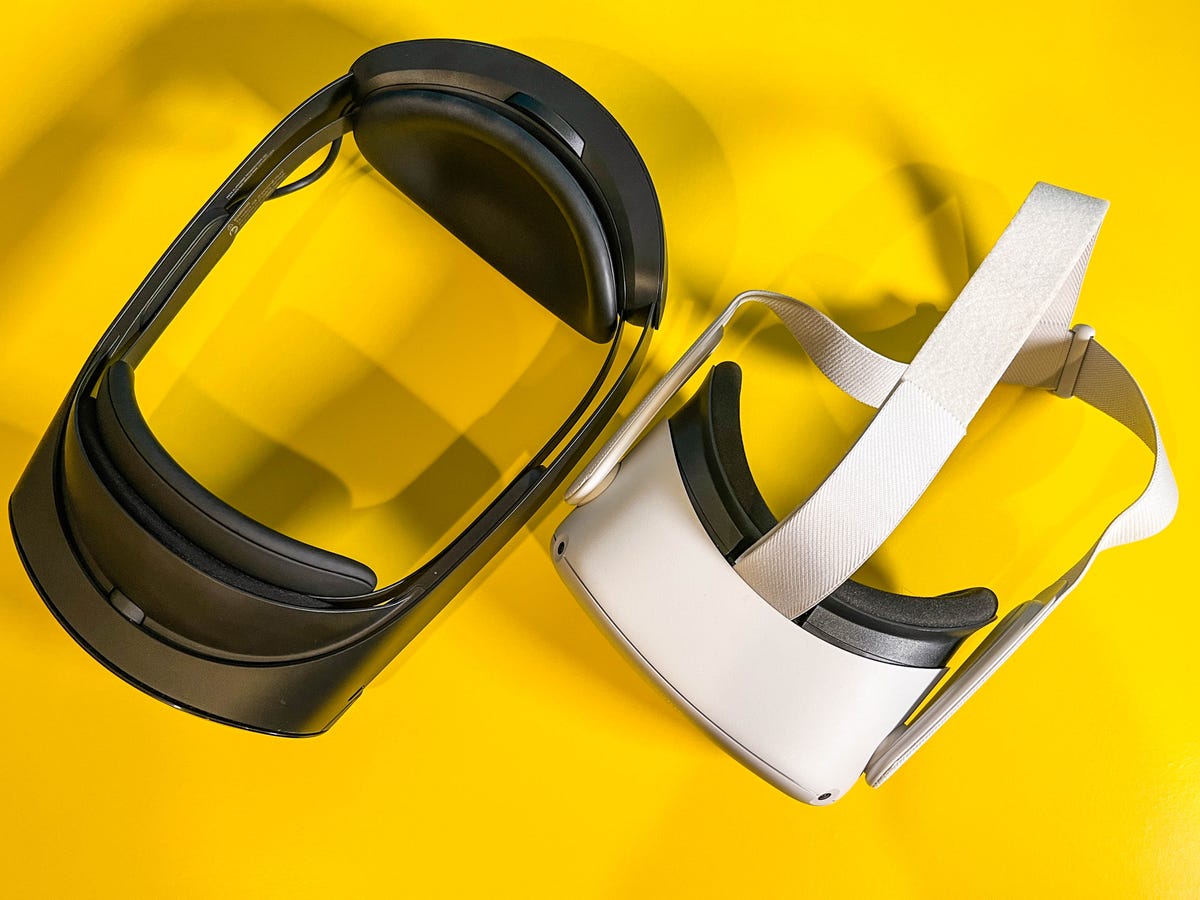
The Quest Pro’s look is slimmed down in some places, but the large back strap and battery make it a larger package to carry (Quest Pro on left, Quest 2 on right).
Scott Stein/CNET
Design: Mostly an upgrade
The Quest Pro is fancier than the Quest 2 on nearly every front. The wide-banded headset, which fits like a visor over my head, has a bigger overall footprint than the elastic-strapped Quest 2. But its front is smaller, and the weight is distributed better. A glossy front makes me look like I have weird bug eyes. Meta includes a rubber protector for that front panel, which makes me wonder how scratch-prone it could be.
New lens optics give this headset a wider field of view and shrink the front of the headset down. Called “pancake optics,” the tech is also on the new Pico 4, and could come to the Quest 3. The display resolution is stepped up over Quest 2. It’s not a massive increase, but everything looks crisp and vivid. The display feels bright, and contrast and black levels are much better than on the Quest 2.

A look at Quest Pro (left) and Quest 2 (right) from the side.
Scott Stein/CNET
I love that the Quest Pro fits over glasses easily because there are no sides to the headset. This has ups and downs, though. The Pro’s design keeps your peripheral vision mostly unblocked while in VR, which sometimes can help me know when things are nearby I should stay away from (or, keep an eye on my kids, sort of). Playing VR games like this, even in a well-lit room, isn’t as weirdly distracting as I thought it would be. But, this headset lacks good light blocking. The included rubber snap-on light shields, which block a bit of side light, don’t help with the open light bleed at the bottom. The light blockers also block my glasses, so I can’t use them without swapping my frames. (A separately sold full light blocker is available, but I haven’t tried it).
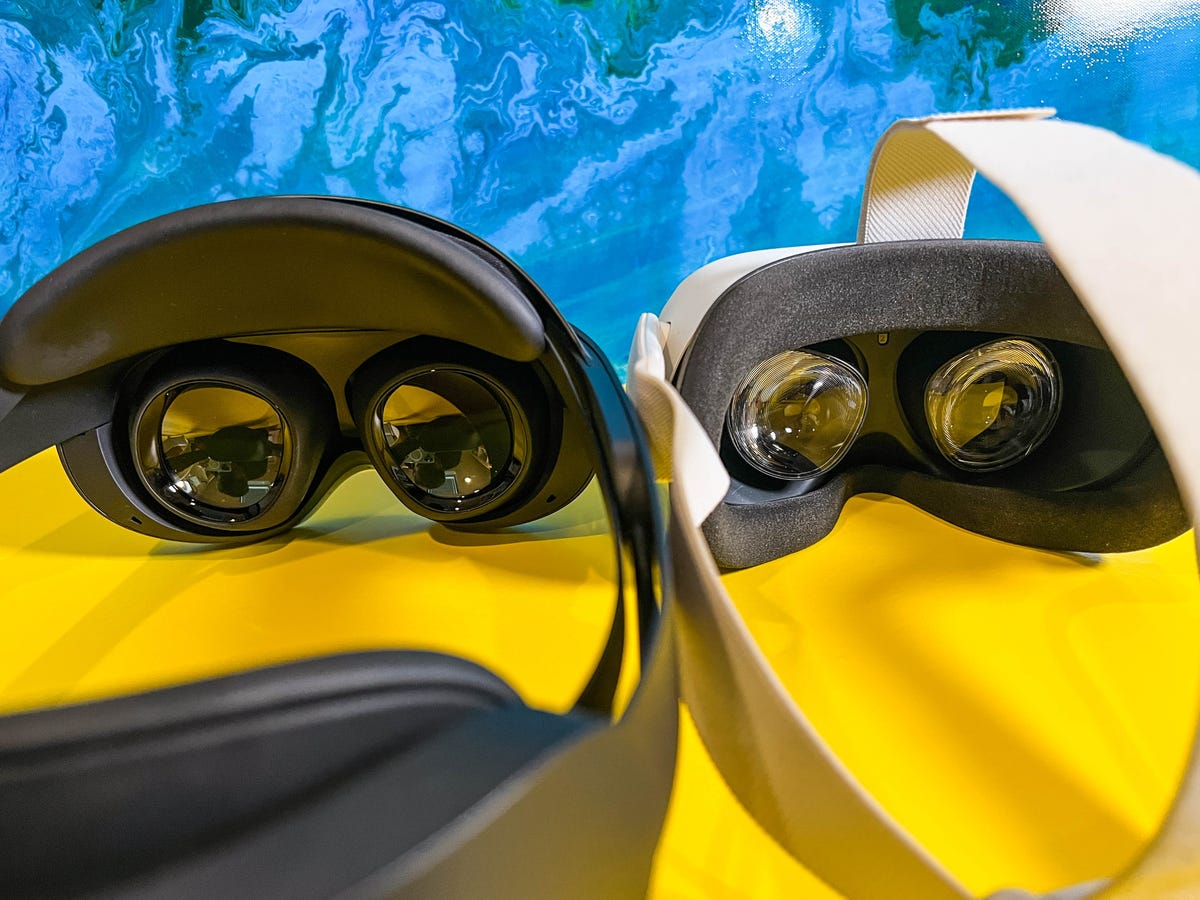
Comparing the Quest Pro (left) and Quest 2 (right). The Quest Pro lenses are bigger, and they can be shifted forward or back with a top dial.
Scott Stein/CNET
There are many ways to adjust the headset: a dial on the back to tighten, another dial on the front to move the lenses further or closer to your head and you can manually move lens width to adjust for eye distance (IPD), supporting a wider range than the Quest 2. But this headset, oddly, doesn’t easily tilt up to allow easy on-off placement, as the HoloLens 2 and Pico 4 have. Sometimes I felt like sliding the headset over my glasses was a bit of a tight fit. And the headset’s auto-fit recommendations, which pop up before launching Quest Pro-optimized apps, are weirdly picky and seem to insist I shift the headset farther up my face than I’d prefer.
The headset really should have a flip-up visor. The design right now is a little hard to easily flip on and off, which is one of the goals of this work-focused device.
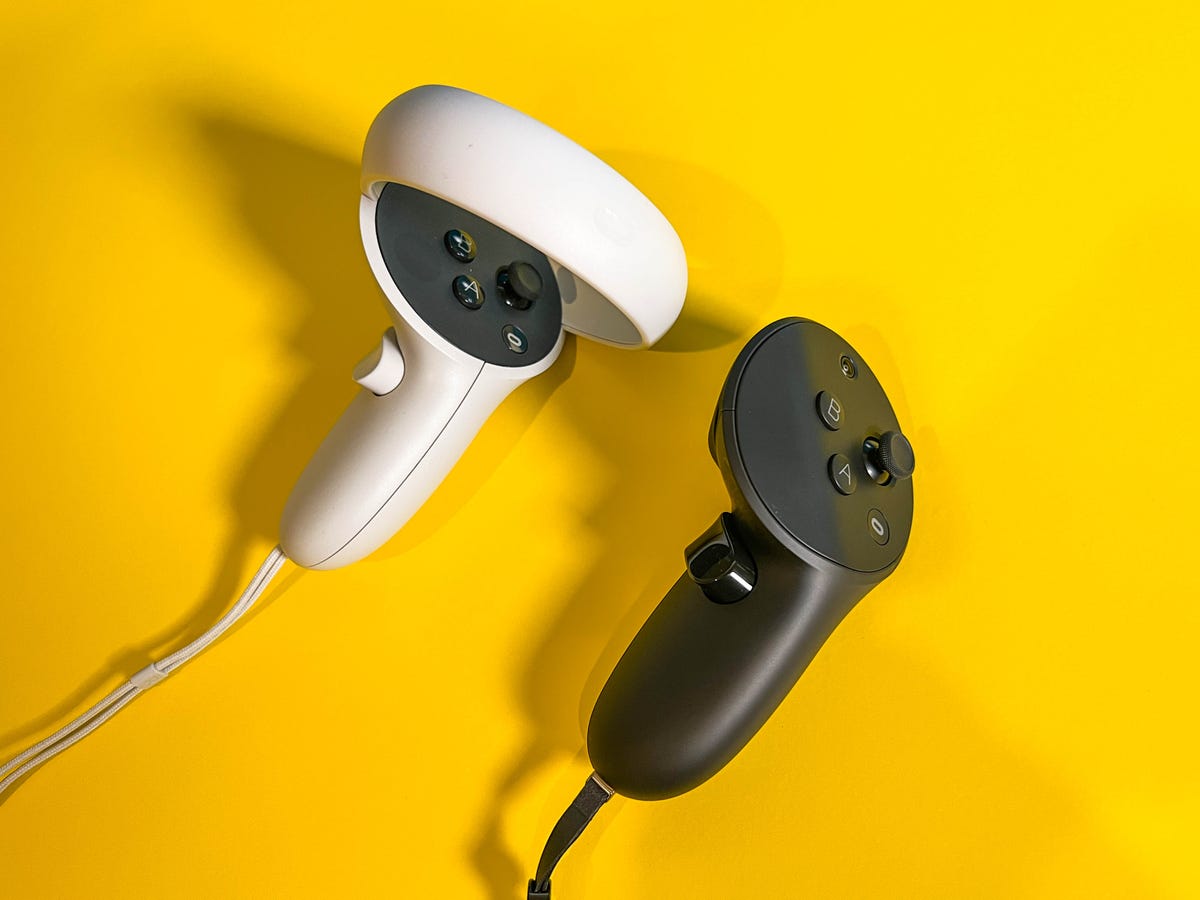
The Quest Pro controllers (right) are like the Quest 2’s (left), but without the ring and with added cameras.
Scott Stein/CNET
Controllers: Better tracking, better haptics, more compact
The new controllers, which you could also buy separately for Quest 2 for $300, have a denser, more compact feel. The old plastic rings of the Quest 2 controllers are gone, and now they are like little black pistol grips. Each one has its own set of cameras for room tracking, and they can work behind my back without losing tracking (that alone could be worth it for those performing in VR).
The haptics are clearly better, with sharper and richer rumbling and tapping sensations. As I noticed during my first demos, apps like Painting VR feel more realistic. Drawing feels better, with more subtle feedback. I find I can recognize contact with objects more. In VR games like Beat Saber and Eleven Table Tennis, responses just a bit more tactile, punchy, realistic.
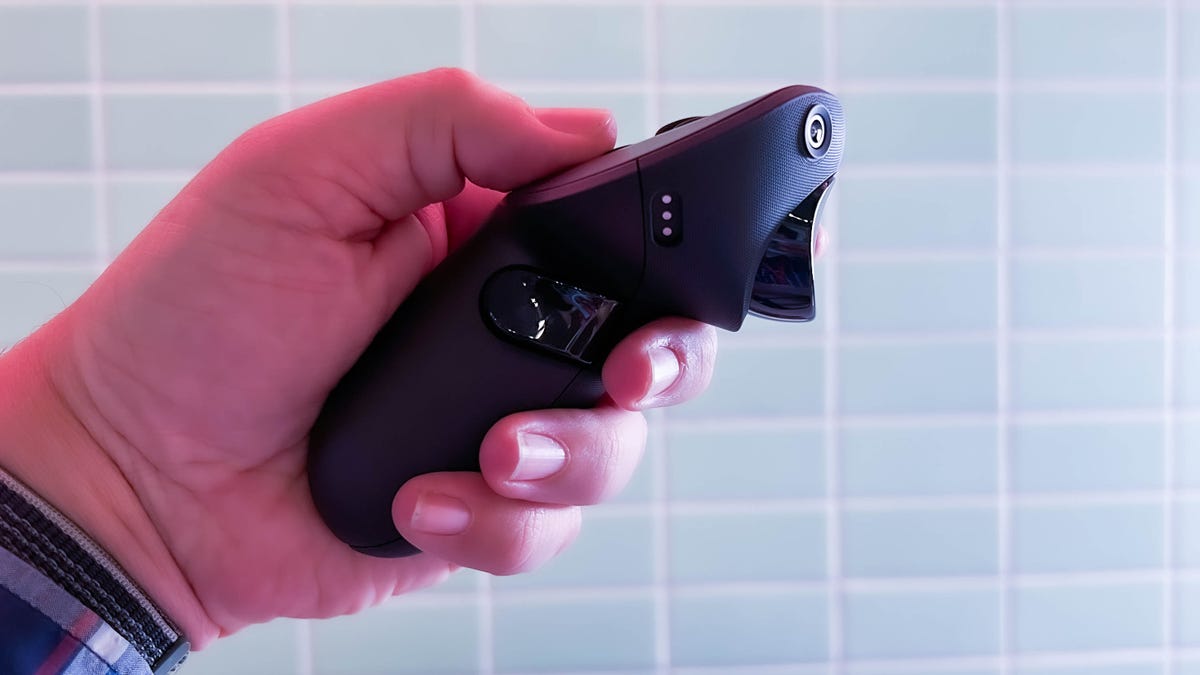
The cameras for tracking are on the front.
Scott Stein/CNET
This is super helpful in VR. I’m not sure the haptics are as rich as the ones in the PlayStation VR 2, but they seem tuned for practical work purposes here, versus gaming. The triggers don’t have haptics in them or any force feedback. I wish they did, though.
Holding these controllers seems like it takes a bit more effort because they feel heavier, or I’m worried about dropping them. I make sure to wear the wrist loop.
These controllers also need their own proprietary charger to power up: Meta includes one cord in the box, or you can use the charging dock. It’s a bummer they don’t use USB-C.
New apps: A limited start
The Quest Pro runs all the same apps as the Quest 2, and its OS is the same. It feels just like a Quest 2 most of the time. Of course, you’d want to find apps that make the most of the Quest Pro, and right now there aren’t many. That could change, but the Quest Pro’s high price and likely limited appeal are bound to limit the number of apps developers choose to upgrade.
Most optimized apps I found right now focus on either adding mixed reality by layering VR with the passthrough color cameras or adding face tracking for avatars. A few mixed-reality apps show promise: the Quest Pro can depth-map a room, and more easily recognize walls, floors and furniture. The Quest 2 can do some of this too, but the Pro’s ability to make the VR seem placed in the real world is better, more like an AR headset.
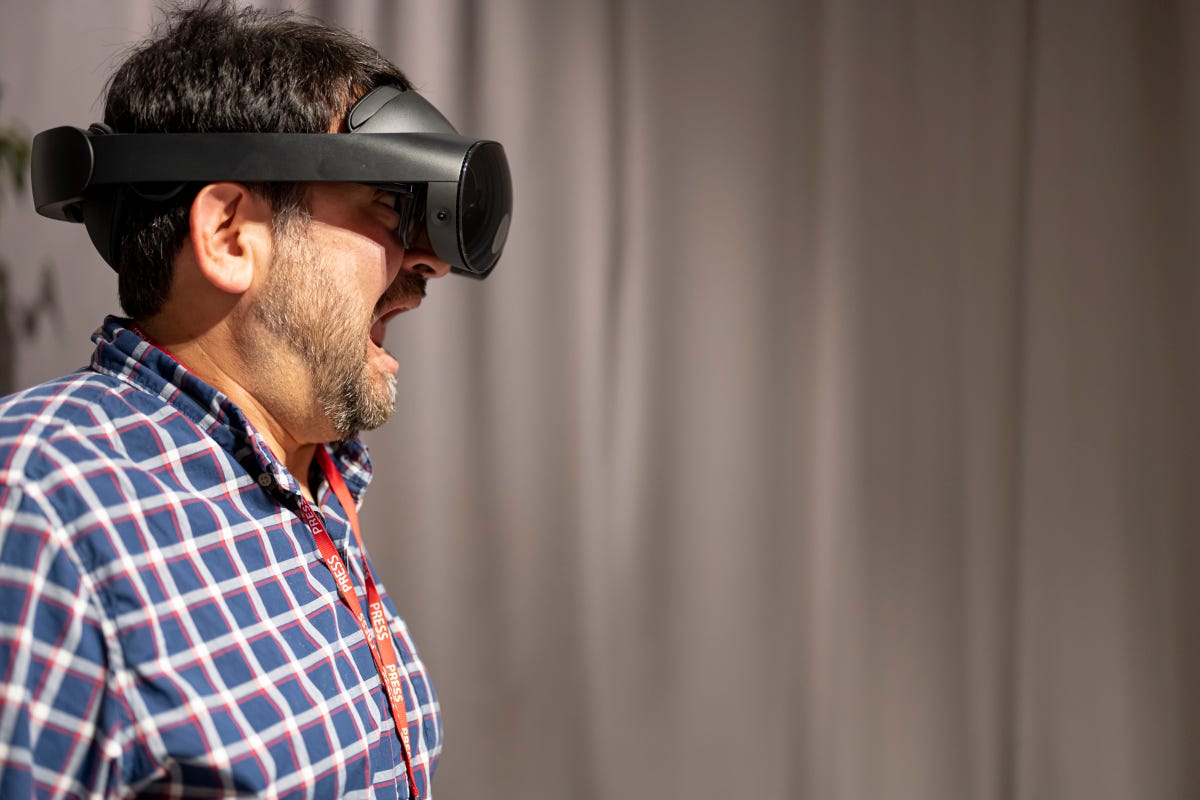
Face tracking is used mainly for avatar expressions. I haven’t used it much at home.
Meta
Eye and face tracking: Too early to judge
Face tracking and eye tracking are features I don’t think I’ll use much, yet. First of all, I can’t see how my own expressions translate using face tracking; it’s something only people viewing you can appreciate. Also, if I’m the only one animating my face while others can’t, what will that mean for communication? I’d rather be on even ground unless I’m performing for a crowd.
Also, while the Quest Pro’s XR2 Plus chip could possibly improve performance, don’t expect better graphics via foveated rendering, a trick that uses eye tracking to focus rendering on where your eyes are directly looking. Meta sees eye tracking as a drain on battery life, and foveated rendering doesn’t look like it’s in the plans for many apps at the moment. Eye tracking and face tracking are turned off in the headset by default. While Meta sees eye and face tracking as key to a new social universe, the reality is very few people will have affordable access to this technology anytime soon.

The Quest Pro can’t capture mixed reality experiences. Figmin XR’s press shot gives some sense of what mixed reality looks like, but it feels better than this.
Figmin
Mixed reality: Sometimes impressive, sometimes not
The feeling of virtual objects being in my home sometimes works: Using Tribe XR to learn how to use a DJ setup, the mixing board looks like it’s hovering in my room. The passthrough cameras are in color, clearly fuzzy and low-res, but enough to make the experience seem like it’s there. My peripheral vision, through the bottom and sides of the headset, oddly helps it all feel more real.
The passthrough color cameras aren’t good compared to what you’d expect from a webcam (I can’t even make out a TV broadcast using them, the image is too washed out). But the view through the lenses lines up uncannily well with my peripheral vision outside the lenses…as I type now, I can make out my hands, as well as my arms outside of the headset. The desk seems to continue beyond my field of view. It helps make the mixed reality feel like a window into the real world.
There are very few apps that use mixed reality at this point. though. When in regular VR, something funny happens: I can see more of the real world around the lenses, but it somehow still works. For fitness games like Beat Saber and Eleven Table Tennis, or Supernatural (ones with lots of motion), this could be helpful. Even in more immersive games like Moss Book II or In Death Unchained, I don’t mind, and I find myself immersed. What throws me off the most is how much of the room I can see below my headset (the Quest Pro rides a bit high on the face to leave open areas below for face tracking with its bottom cameras).
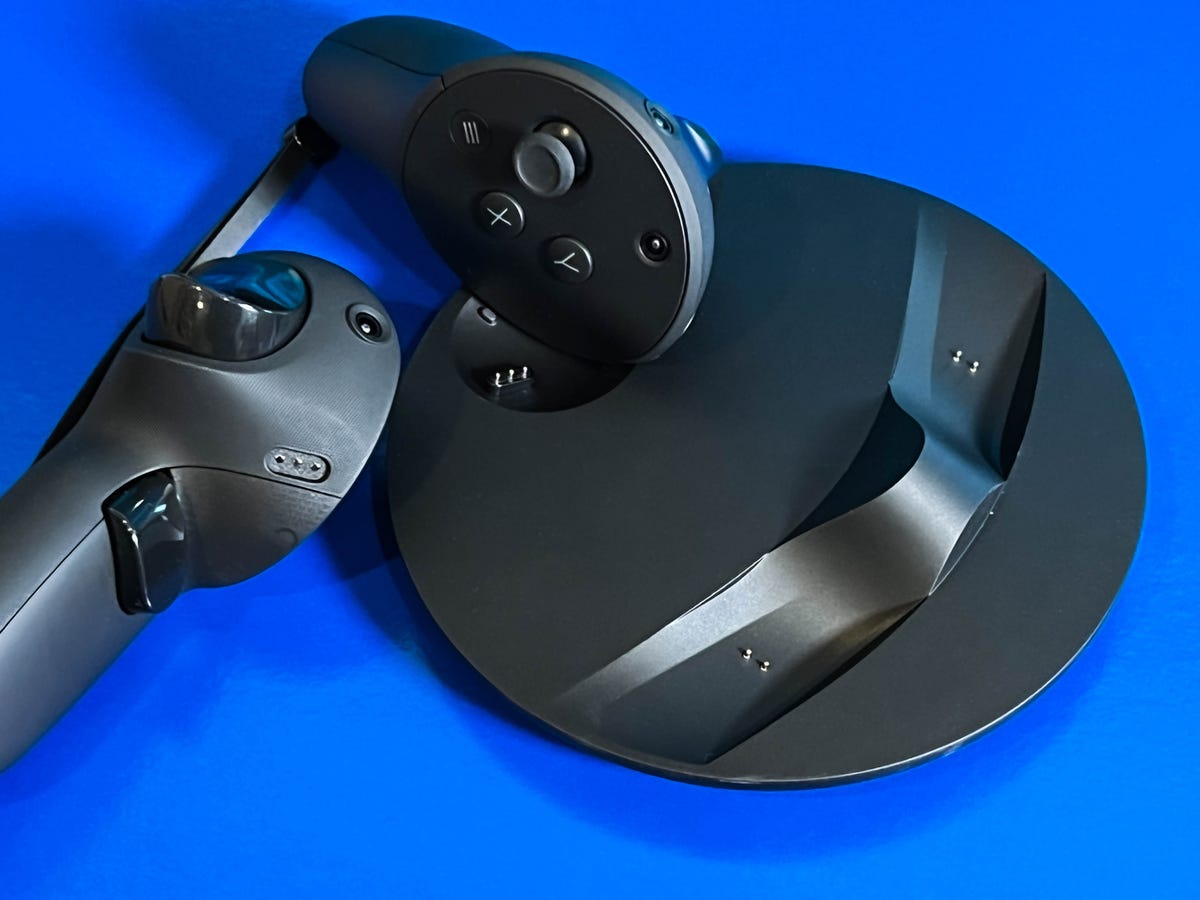
A charge dock comes with the Quest Pro. It charges the controllers (which have a proprietary connector) and the headset (which also has USB-C).
Scott Stein/CNET
What’s in the box?
The Quest Pro comes with a few bonus extras: besides the headset and the controllers, there’s also a charging dock that uses magnetic pins to charge the headset and the controllers together using one USB-C cable. There’s also one separate controller charger (the controller uses its own proprietary pin-based charge connector), two rubber light-blockers that snap on using magnets and a rubber front cover for the headset’s visor (which can’t be put on while the headset is charging, weirdly). There are also two tiny stylus tips that can pop into the bottoms of the controllers when the wrist straps are removed. The stylus tips are for writing and whiteboard apps like Meta’s Horizon Workrooms, but they’re so small that I worry I’ll lose them fast.
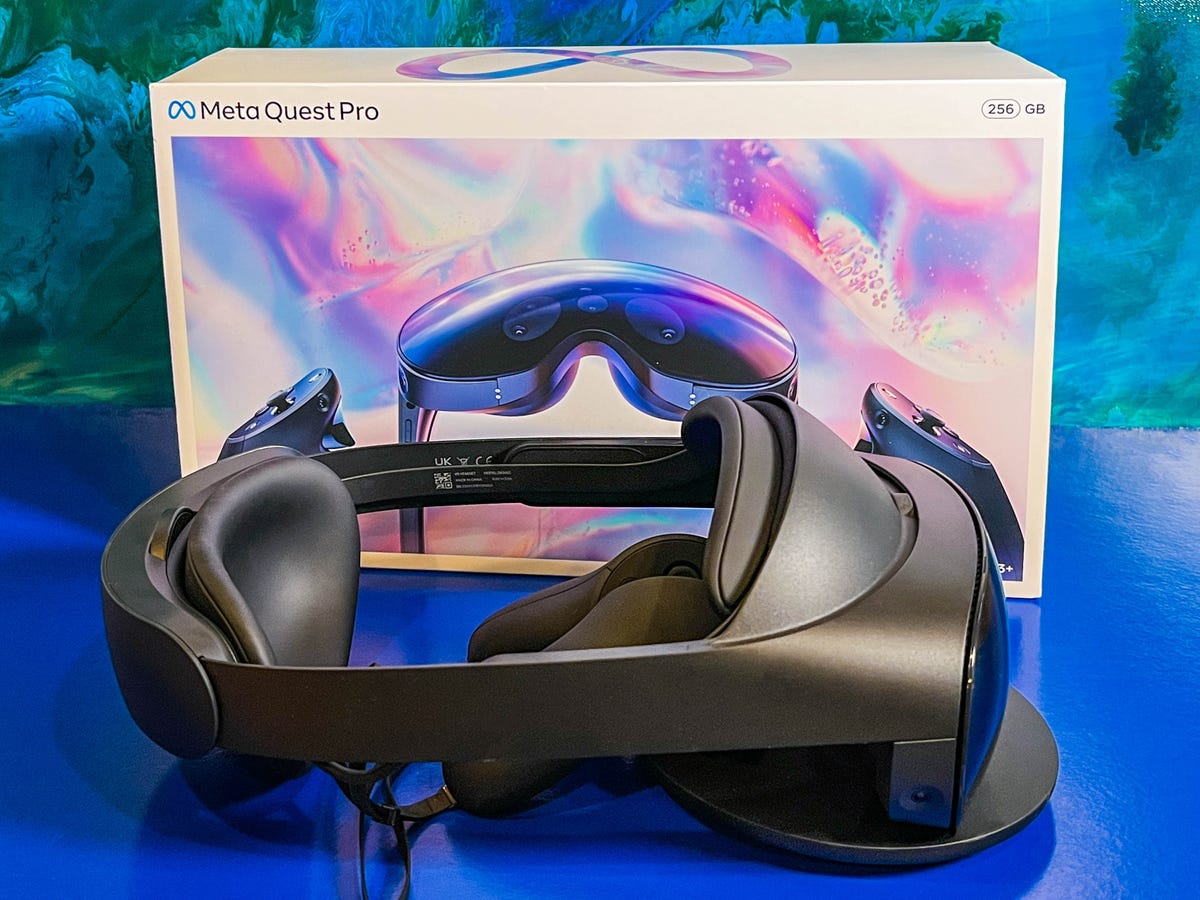
It would be helpful if Meta included a carrying case for all this.
Scott Stein/CNET
No case is included, which is a shame. The Quest Pro is hard to carry around and, like all VR headsets, exposing the lenses to sunlight can damage the VR display. I like to keep my VR headsets covered or in bags for this reason, and I’m not sure how I’d ever carry around the Quest Pro (the Quest 2, meanwhile, packs down a bit more easily). The HoloLens 2 comes with a compact case, in comparison. It’s useful.
Battery life? TBD, but likely less than Quest 2
It’s hard to tell, after only a couple of days, what the battery life is like on the Quest Pro. I find I’m running low on battery just when an extended VR session I’m in starts to feel like I’m ready for a break anyway. Meta suggests keeping the headset tethered during extended work sessions, but that also kills one of the points of a standalone headset.
An hour or two is what I’m getting so far. As far as the rechargeable controllers, it’s harder to say. Meta didn’t give clear estimates for these, but they’ll likely not last as long as the long-life Quest 2 controllers that use AA batteries.
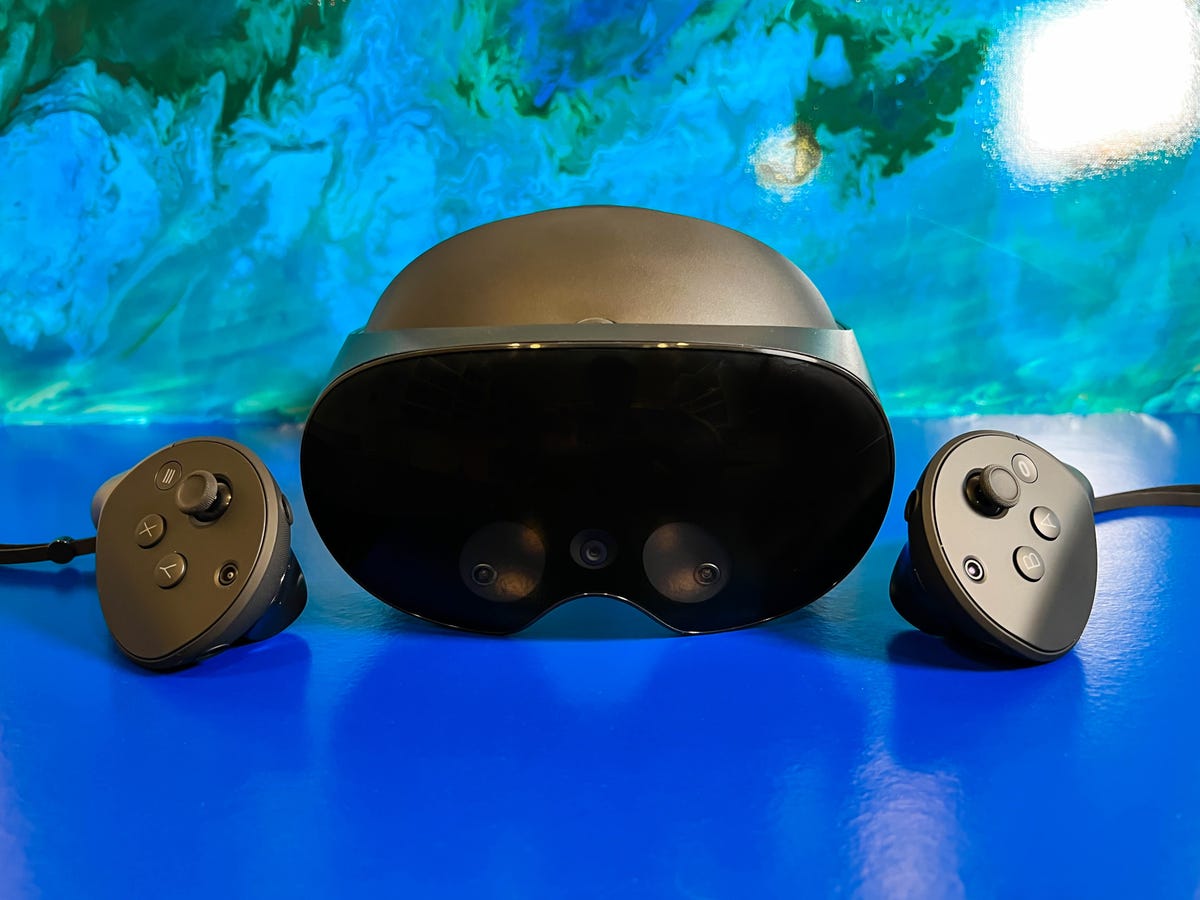
Scott Stein/CNET
Quest Pro feels like a half-step
The Quest Pro won’t be the ultimate VR headset. The landscape’s moving too fast. Meta confirmed the Quest 3 will cost a similar price as the Quest 2. It could be arriving next year, most likely with better passthrough cameras and pancake optics like the Pro.
How is the Quest Pro as a VR headset? Sometimes it feels like a step up, but sometimes it’s not different enough. And what about as an AR headset? At this point, with a limited app set that supports mixed reality, it’s hard to tell.
I’ll keep using the Quest Pro, but as I finish writing my review in Immersed on this headset, I’m feeling like I can see glimmers of Meta’s metaverse future in this device. But the Quest Pro at this point resembles a mixed reality developer kit more than it does an enhanced VR headset.


